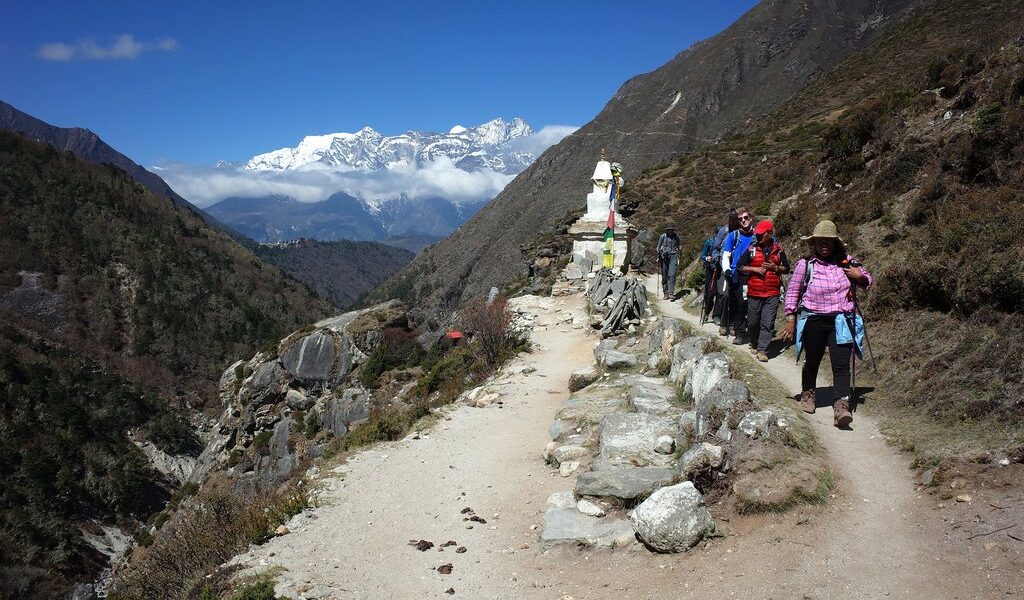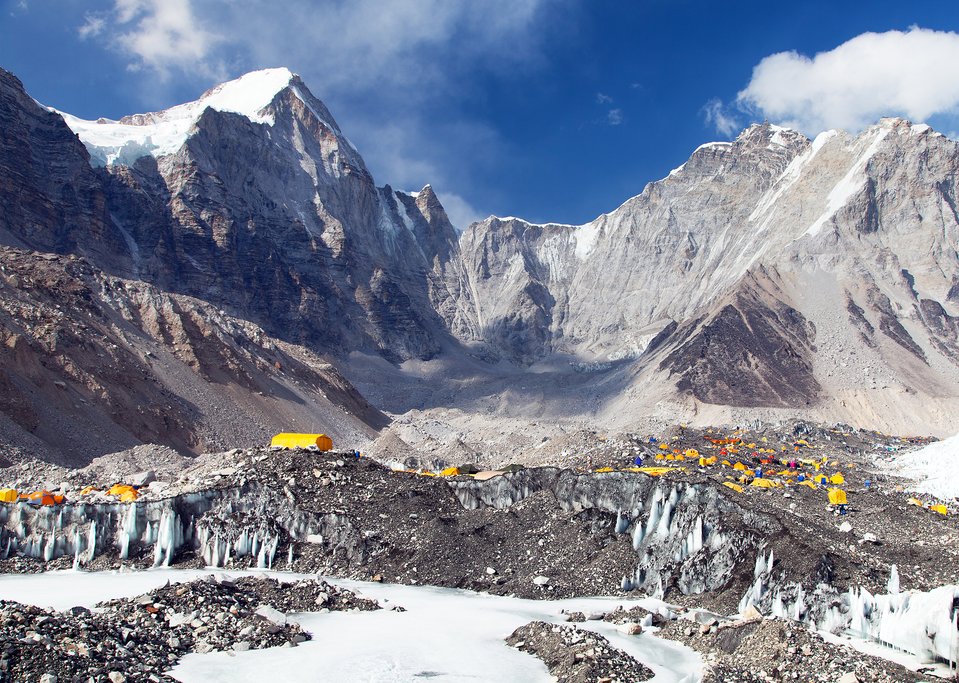
The best time to visit Everest Base Camp depends on the activities you hope to do while there. For trekking, you should go in spring (March-May) or fall (October-November), while a helicopter tour can be taken any time the weather is good outside of monsoon season. Winter shouldn’t be off the table, either; as long as you’re prepared for cold temperatures, you’ll be treated to crystal-clear mountain views. Below, you’ll find some important points to consider when thinking about when to visit EBC.
## Weather & Accessibility on the Journey to Everest Base Camp
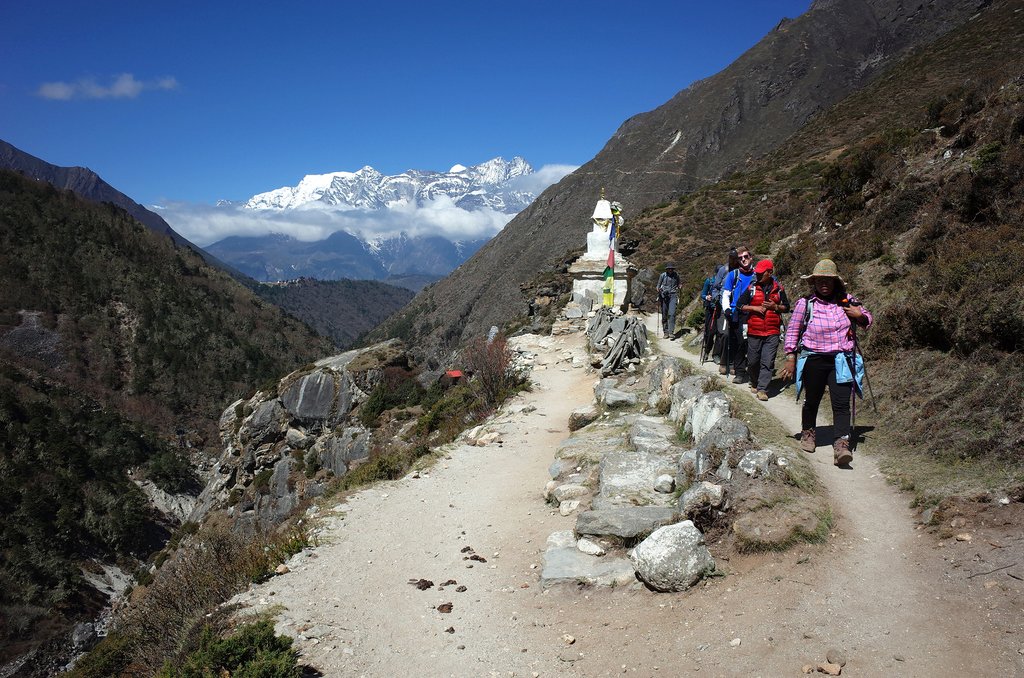
Embarking on the trek to Everest Base Camp (EBC) is an unforgettable adventure, but it’s crucial to understand the environmental conditions that define this high-altitude destination. EBC itself sits at a formidable altitude of 17,600 feet (5380 meters), and the entire overland route to reach this iconic location is characterized by significant elevation gains. Consequently, the Everest region rarely experiences truly ‘warm’ weather. However, despite the consistently cool temperatures, you’ll find substantial variations in temperature, the amount of rainfall, and snowfall patterns throughout the year. Careful planning with regards to these factors is essential for a safe and enjoyable journey.
### Spring and Autumn: The Prime Trekking Seasons
The months of March, April, May, October, and November are widely regarded as the most favorable for trekking in the Everest region. These periods, encompassing the spring and autumn seasons, typically offer the most agreeable conditions. During these times, trekkers can anticipate reasonably moderate temperatures, clear and inviting skies, minimal rainfall, and a reduced probability of encountering disruptive snowfall.
These optimal weather conditions translate to enhanced visibility, safer trail conditions, and overall a more pleasant trekking experience. Naturally, the popularity of these months means that the trails tend to be more crowded, and you can expect to see more trekkers along the way. If your priority is to experience the best possible weather and visibility, then accepting the trade-off of sharing the trail with more people is something to be expected. Remember to book accommodation in advance!
The allure of clear mountain vistas and stable weather draws many to the Everest region during these peak seasons. The vibrant landscapes are at their finest, offering unparalleled opportunities for photography and immersive experiences in the heart of the Himalayas. Remember to hydrate well and take regular breaks on your journey!
### Winter: A Season of Solitude and Striking Beauty
The winter months, encompassing December, January, and February, present a different perspective on the EBC trek. While not necessarily a ‘bad’ time to undertake the journey, winter is undeniably considered the off-season. Temperatures plummet to extremely cold levels, demanding that trekkers come adequately prepared with specialized gear to withstand the freezing conditions.
However, winter in the Everest region also offers its own unique rewards. The skies are often exceptionally clear, providing breathtaking, unobstructed mountain views that can be truly awe-inspiring. Moreover, you’ll find yourself far from the crowds that characterize the peak seasons, allowing for a more solitary and intimate experience with the majestic landscapes.
The tranquility of the winter landscape can be deeply appealing to those seeking solitude and a more challenging adventure. The crisp air and snow-dusted peaks create a dramatic and unforgettable backdrop for your trek to EBC. Just ensure you have sufficient experience with winter trekking and possess the appropriate equipment for extreme cold.
### Monsoon: A Verdant But Challenging Time
The monsoon season, spanning from June to early September, presents perhaps the most challenging time to travel to EBC. The wet weather brings a host of potential issues, including an increased risk of landslides on the trails and muddy conditions underfoot. Moreover, persistent rain clouds can frequently obscure the sought-after mountain views.
Despite these challenges, the monsoon season also offers some compensations. Temperatures tend to be warmer during this period, and it’s rare for it to rain continuously throughout the entire day. If you’re adequately prepared for wet conditions and don’t mind encountering some rain along the way, trekking during the monsoon can still be a rewarding experience. It’s worth noting that rainfall tends to decrease with increasing altitude.
The Everest region transforms into a lush, verdant landscape during the monsoon, with vibrant greenery blanketing the hillsides. While the mountain views may be intermittent, the experience of trekking through this revitalized landscape can be quite unique. Make sure to pack waterproof gear, including a rain jacket, waterproof pants, and a backpack cover.
If trekking to EBC isn’t on your itinerary, you may want to consider an unforgettable helicopter tour to EBC. These flights are best enjoyed when the weather is clear and predictable, making any time outside the monsoon season preferable.
The weather considerations extend beyond the immediate Everest region. It can also significantly affect flights between Kathmandu and Lukla. Flying remains the most popular mode of transportation to Lukla, the gateway to the EBC trek. However, flights are frequently subject to cancellation when weather conditions and visibility are poor in Kathmandu, Lukla, or along the flight path. Flights outside of the monsoon season are generally more reliable, but rain, fog, or smog can disrupt flight schedules at any time of the year.
## High Season Crowds & Alternate Routes
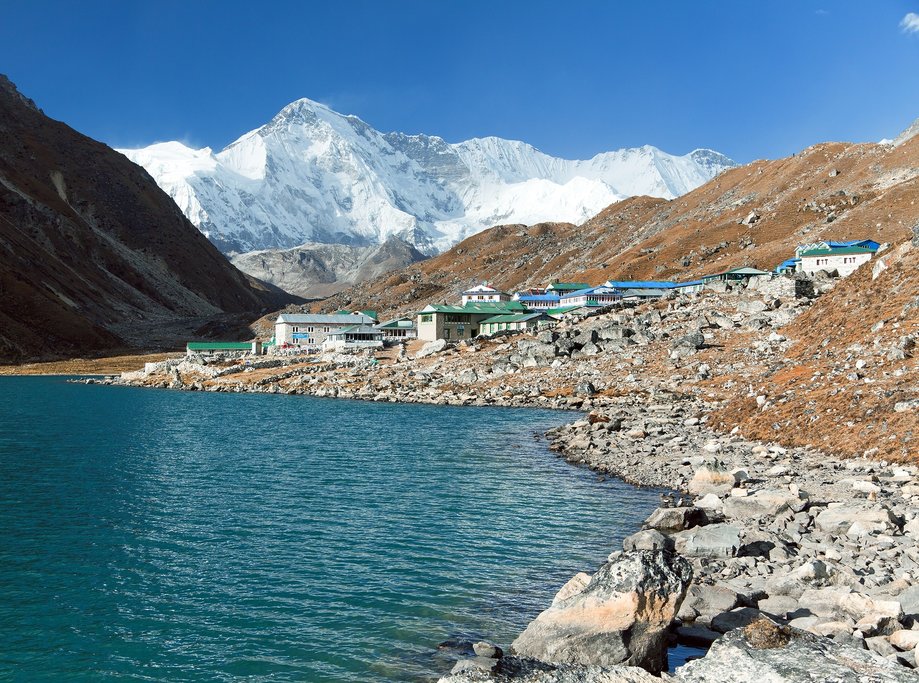
Spring and autumn represent the peak tourist seasons in Nepal, and given that the EBC trek stands as Nepal’s most popular adventure, the trails can become quite crowded during these times. It’s highly unlikely that you’ll have the main trails entirely to yourself, and securing your preferred accommodation can also be challenging. Trekking with a guide is advisable at any time, but it becomes even more valuable during the peak season. Guides can leverage their local knowledge and connections to secure lodging for you that might be difficult to obtain independently.
Furthermore, the Everest climbing season typically runs from May to early June. Even if you have no aspirations of summiting Everest itself, the area will be bustling with expeditions during these months, adding to the overall density of people in the region. Be sure to book your trip in advance!
Flights to Lukla also tend to sell out well in advance during the peak season, making it essential to book your tickets as early as possible to avoid disappointment. Plan accordingly and be aware that some delays can happen.
During the winter and monsoon seasons, you’ll avoid the high season crowds. However, while finding a bed in a comfortable teahouse may be easier than during peak season, it’s important to note that many establishments close their doors during the off-seasons. Careful planning for lodging is crucial during these times.
The classic EBC trail remains the most frequented route, but numerous alternative treks in the region offer equally captivating experiences with a fraction of the visitors, even during the busiest times. Some of these alternative treks still lead to EBC via different routes, while others bypass it entirely but provide trekkers with an equally rewarding glimpse into the stunning landscapes, rich nature, and unique culture of the Everest region.
While the classic EBC trek is best undertaken during spring or autumn for optimal weather conditions, these months inevitably bring the challenge of overcrowding. To sidestep this issue, consider exploring one of the many alternative journeys in the Everest region. These provide a great alternative for a quieter journey.
The trekking trail from Jiri to Lukla presents an alternative to flying directly to Lukla from Kathmandu. This route allows you to relish the tranquility of quieter trails before merging with the busier sections of the Khumbu Valley. Known as the “Pioneers’ Route,” this was the trail used by early Western mountaineers to access the Everest region before the construction of the airport at Lukla. Reaching Jiri requires a day’s drive from Kathmandu. Alternatively, consider flying from Kathmandu to Phaplu and trekking through the Solukhumbu region from there. These treks typically span 4-7 days and are best undertaken during the peak seasons or even in winter.
The Gokyo Lakes Trek stands as one of the more popular alternatives to EBC, yet it still receives fewer visitors than the classic route. The Gokyo Lakes themselves represent the highest freshwater lake system in the world. This trek culminates in the summit of Gokyo Ri, which offers views of Everest, Lhotse, and Cho Oyu. An added advantage is that the Gokyo Lakes trek involves fewer nights spent at extremely high altitudes compared to the EBC trek. The best time to embark on this trek is during the peak seasons when conditions are at their finest.
The Three Passes Trek is a more challenging option in Nepal for experienced trekkers who seek to avoid the EBC crowds. It’s a circuit rather than an in-and-out trek, ensuring that each day brings new scenery and adventures. As the name implies, you’ll tackle the challenge of crossing three high mountain passes. This trek is not recommended during the winter months due to the likelihood of snow-bound passes.
The Arun Valley and Everest Base Camp Trek offers a unique approach to the region from a different direction. It traverses the Arun Valley, nestled between the Sagarmatha and Makalu-Barun National Parks. While it incorporates some sections of the classic EBC route, it diverges sufficiently to maintain a sense of novelty and adventure. Even during the peak seasons, this trail remains remarkably empty until you converge with the EBC trail.
For those traveling in winter, consider indulging in a luxury tour. There are some very comfortable luxury lodges available in the Everest region. A luxury lodge at the end of a cold day would be unforgettable!
Experienced mountain climbers who are ready for a challenge should think about climbing Island Peak. It is best attempted in spring or autumn, when weather is ideal.
## Festivals
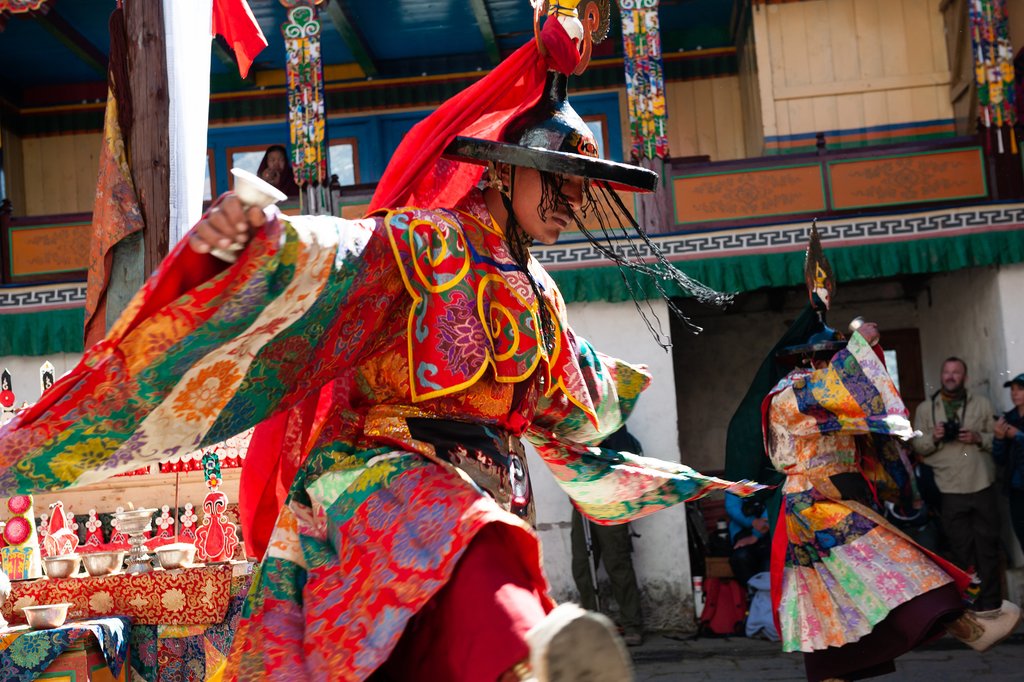
A major highlight of traveling in Nepal is witnessing one of the many Hindu or Buddhist festivals. These festivals happen throughout the year. The people of the Everest region are mostly Tibetan Buddhist Sherpas, which makes their culture very unique. One of the most important festivals for the Sherpa people is Mani Rimdu, in October or November. If you can, try to be in Tengboche for the festival. The monks dress up in costumes and perform dances.
## More Useful Information
Enjoy planning your journey!
B-1705

